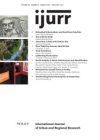This article examines how ‘urban experience’ is objectified and transformed into something that is legible to the state and its experts. It conceptualizes design guidelines as a political technology where bodies of expert knowledge, emplaced in a planning bureaucracy, shape the way the built environment is produced and experienced. Using Singapore as an example of a centralized planning bureaucracy, I analyze how lighting, public art and advertisement signs are targeted to produce a total environment with normative narratives. This article makes two contributions. First, it unpacks the processes that translate different modes of legibility in an attempt to make ‘experience’ legible for planners. The political efficacy of guidelines and pre‐established bureaucratic boundaries means that planners can only intervene through a series of combinations, mediations and approximations. Thus, legibility proceeds in a way that is akin to ‘feeling around’. Second, it foregrounds the ‘middle layer of urban governance’ that is often ignored in the discipline. Guidelines represent one coordinate in a system of political technologies that is concerned with producing the norm, that substrate of urban production mechanized through a series of repetitions, gradations and classifications.
Details
Written by:
Kah‐Wee Lee
Digital Object Identifier (DOI)
10.1111/1468-2427.12102
About DOI
Read full article as PDF
Read full article as HTML
See the references for this article
